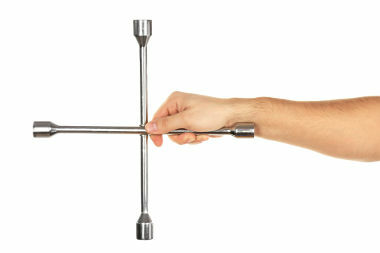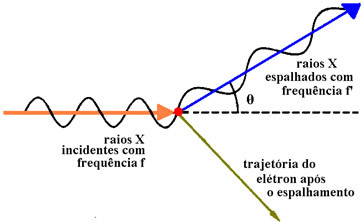We know that Newton's First Law, also known as the Law of Inertia, says that a body tends to remain in its state of rest or uniform rectilinear movement, unless an external force acts about it. This principle is used to build instruments that can measure the Earth's rapid movements, such as earthquakes, tremors, and other vibrations that occur in the earth's crust.
Basically, we can say that the working principle of a seismograph is that of inertia. According to the figure above, we can see that the base of the seismograph is fixed to the ground, exactly at the point where we intend to measure the vibrations. On this base, a drum rotates slowly, with graph paper. An articulated arm is connected to a vertical axis by a bearing system with very little friction. It is free to rotate about the vertical axis that is attached to the instrument base.
A “large” mass and a pen are placed on the arm. A very weak restorative spring helps keep the arm in position. See the figure above.
When there is a vibration of the ground in the direction of the drum axis, the base of the instrument tends to follow this movement. The arm, in turn, does not move, as little force can be transmitted in that direction by the bearing system that attaches to the shaft. The mass barely moves. There is a relative movement between the drum and the pen, which will register the range of movement.
Do not stop now... There's more after the advertising ;)
Modern instruments (drum and pen) are replaced by an electronic system that sends the relative displacement signal to a computer.
The seismograph is used not only to detect earthquakes, but also in oil prospecting and in mapping the terrain below the surface. The tremors are artificially caused by the explosion of dynamite at a point on the ground. A series of seismographs are placed throughout the region that one wants to map. By measuring the vibrations at each point on the terrain, you can get an idea of what its morphology looks like. interior, which layers are present, if there are conditions for oil formation or if there are large rocks.
The Earth's internal constitution was largely discovered by analyzing data collected by seismographs around the world, which measured the vibrations caused by earthquakes. The vibrations of earthquakes (seismic waves) are of various types and reveal the density and constitution of the Earth's interior. From the propagation time and the detected intensity, we can determine the density of the material covered by the seismic waves.
By Domitiano Marques
Graduated in Physics
Would you like to reference this text in a school or academic work? Look:
SILVA, Domitiano Correa Marques da. "Newton's First Law and Earthquakes"; Brazil School. Available in: https://brasilescola.uol.com.br/fisica/a-primeira-lei-inercia-os-terremotos.htm. Accessed on June 27, 2021.


